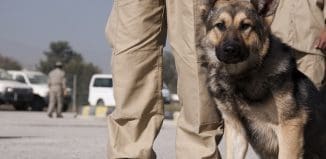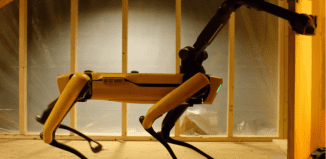Student Team Developing Next-Gen K-9 Tech
This post is also available in:  עברית (Hebrew)
עברית (Hebrew)
A group of students from the University of West Florida have been working on developing a camera system designed to improve the link and communication between military dogs and their handlers. The device is intended to let handlers know what their canine is up to whenever the dog is out of sight.
The Guided Fur Missile Tactical Camera System is part of the university’s “Hacking for Defense” program. The program is an initiative by the United States Department of Defense that intends to teach students to work with the country’s defense and intelligence communities in order to address emerging threats and challenges. The program began at Stanford University in 2016, it now is active in over 50 different universities throughout the United States.
The three-man team was first formed two years ago in the summer. They began working on the tactical dog camera this past summer. The device is a remotely viewable, light-sensitive camera system that transmits video from the dog’s point of view to the handler’s mobile device or tablet.
“One of the most important things with this system is ensuring that it is capable of providing the video feed to the people who need it from the distances that they need it to operate at,” said Ty Faist, one of the project’s team members. He expanded by mentioning that the device has been tested in a multi-story concrete structure. “The handler and the animal were on the third floor, and I actually walked outside on the ground floor and was able to pick up a video feed through more than 50 meters of material.”
Wuwf.org mentions that the team is interested in receiving funding from both the military and civilian sector for the device. The team’s leader, Dr. Donovan Chau, has mentioned that if the university, as well as the U.S. Air Force, agree to fund the prototype device, the product will have greater commercial potential beyond the military.
“You also have law enforcement agencies turning to them more and more for SWAT operation,” said Faist. “They’ll send them [the dogs] in the building before any of the human handlers go in. You also have search and rescue groups that would love the ability to know exactly what their dog’s looking at.”






























